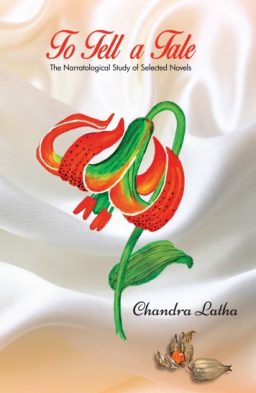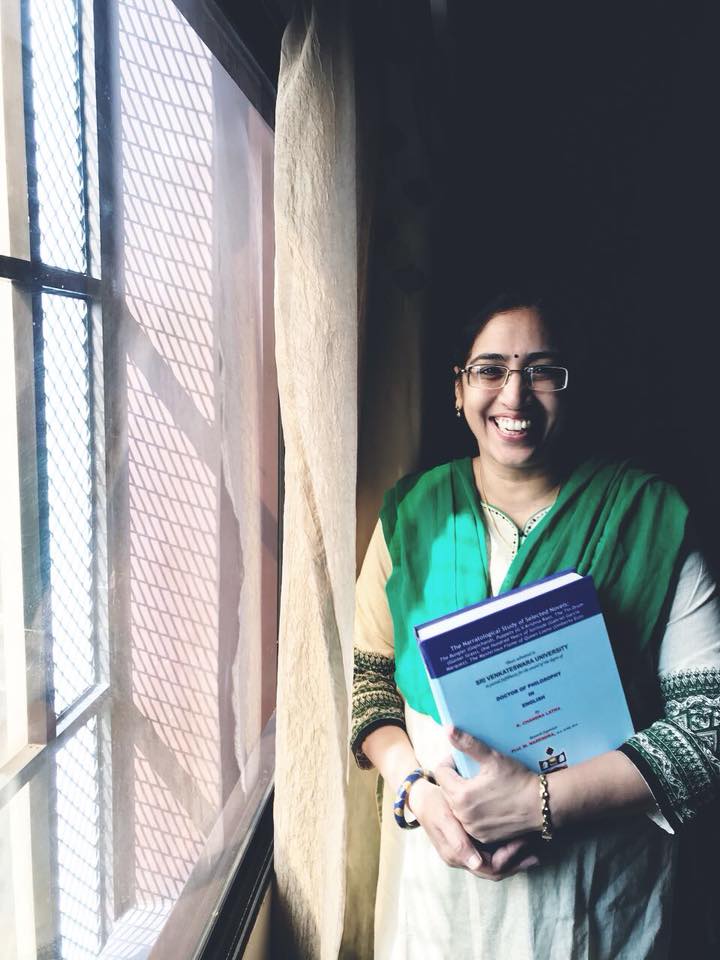
To tell a tale-26
(Chapter-7 Part-3)
-Chandra Latha
M.M. Bhaktin suggests that the organic nature of novel is embedded in it’s pluralistic nature. Marquez’s conscious choice of multi-fold narration makes it the ultimate example for textual plurality. The oral narrative tradition of folklore is cleverly captured in the narrative style.
Inclusion of the distant places and different cultures like Java, Singapore and people of diverse origins like Arabs, Turks, Americans, British, French native Americans, and gypsies and their life and beliefs blurs the geographical borders in the narrative and makes any global reader to identify and enjoy his own reflection however small it is.
The narrative technique of actualizing the idiom enables the reader to start believing that the otherwise fantastic narrative as truth. Polyglossia is achieved through the plurality of the sentence and the multiplicity of the narrative tone. The natural and magical remedy that Aureliano invents to regain the lost memory affected by the insomnia plague establishes the power of the magic of the words in general and the permanence of written word in particular.
With numerous hints given and puzzles to be solved, with a banana peel thrown here and there, the novel compels the reader to become a part of the narrative while deciphering it.
The real geographical settings of Macondo based on Aracataca and Baranquilla, are deliberately changed to a state of mind with a conscious effort to leave space for imagination of readers. The reader once entered into this imaginary Macondo, is left with no choice but to accept what all the narrative offers.
The greatest achievement of the narrative celebrates is the ultimate fact it offers. This novel created history which was otherwise would have lost in oblivion and is accepted by the generations of people of Columbia with great reverence and affinity.
Marquez employs the double scheme of linear and circular time that exists simultaneously by which the narrative achieves the famously described toung-in-cheek narrative style in the novel. Marquez himself described this style as Bolero, most authentically Latin American music. It may seem excessively sentimental but is also tongue-in-cheek, its exaggeration tempered by humor and a sense of ’don’t take it too literally.” With the brilliantly knit narrative the novel achieves the tongue in cheek style throughout the novel and the novelistic narrative in One Hundred Years of Solitude stands out to be lyrically beautiful and objectively powerful, ultimately a celebrated Bolero.
In Chapter-VI, The Tip of the Flame: The Mysterious Flame of Queen Loana, The illustrated novel is a memorabilia of Umberto Eco who opted to write the story of his generation instead of his own. This becomes a novel instead of autobiography and the collective memory of the generation of Eco enriches the story of the antique book dealer, amnesia patient, Giambattisa Bodoni.
The title The Mysterious Flame of Queen Loana is inspired by an episode of the American adventure comic strip, Tim Tyelr’s Luck which is “an incredibly slipshod narrative that lacks both charm and psychology.” Eco’s novel has both charm and psychology but it’s no more disciplined than the original but, evolves as a discursive reconstruction of what one surmises to have been the author’s early reading life.
An overt and an auto diegetic narrator exhibits the novel as a homo diegetic narrative with a suggestive incipit that enables the dual approach of the narration both psychological and philosophical. With the omniscient narrative mode, the character-focalizer creates the narrative situation in the narrative style of stream of consciousness without any personal context.
The narrator begins the novel with this incipit setting with the sentence, “That’s how it all began.”
The first chapter of the novel is interwoven with numerous references and quotations, including the title of the chapter, are the first lines of different texts. The novel is presented in a three part narrative similar to the movement in classical music composition, sonata, which contains three sections namely exposition, development and recapitulation that give ample space for a very dramatic piece. Similar to that form and treatment, this novel has three parts, the first is “The Incident”, second is, “Paper Memory,” and the third part is, “Oi Noestoi.” (The Returning)
The self-declared, illustrated novel, has innumerable illustrations but, without immediate connection with any of the narrators experiences. These illustrations testimony everybody Italian experiences, memories during those difficult times. And, they witness the influence of popular culture on everyday life.
Intertextuality is the unique feature of the novel, The Mysterious Flame of Queen Loana. The narrative is intermingled with texts, pictures, illustrations, cartoons, films, songs, record flaps, photo albums and so on. Unlike the popular and conventional version of an illustrated narrative where the illustration is created based on the textual narrative, between the real graphic artifacts and the actual narrative the novel exists. This simultaneity facilitates to co-create time and space of the people of the narrative. As a semiotician Eco naturally fills his novel with many signs and symbols to read. The symbolic approach of fog to the loss of memory, attic to the locus are to mention a few.
The narrative is double coded with the two time spans that of the contemporary Italy that the main character belongs and the time of his memory, i.e, his childhood. Eventually, two narrative worlds are created between personal and cultural memory through which the main character explores the existence of I.
This nature of reconstruction of memory is more cognitive in approach and the novel plays the role as a conduit for culture that enables the main character, Bodoni, to understand how the child constructs cultural memory.
The choice of simple language in the novel is conscious effort both appropriate for the period of the narrative and a symbol of liberation from rhetoric, reflecting the partisan resistance idea about freedom of speech. The simple and straight narrative creates a hybrid textual narration which moves with hints, mostly questions leading to questions. The suspense in the novel is maintained on par with Eco’s earlier mystery novels. The narrative situation created by inception of a dream within the dream is brilliant and spectacular.
The novel resonates prominent features of Neo-realism, a post-war movement in Italian Cinema that transmigrated into other genres. Neo-realism is an expression of the struggle for the survival. The survival effort was multifold, both subjective and objective, mundane and existential. The everyday life of the wounded Italians that existed and evolved during that period of healing is captured with subtle details.
The hybrid text evolved beyond the pronounced word is achieved in the novel through the narrative multiplicity and plurality. The variety of memorabilia included in the text enables to open an interactive space between the reader and the text which becomes essential a natural course of textual interpretation.
In this readerly text, Eco presents himself as a reader sharing his reading experiences as aesthetically presented textual memories. The intertexuality and the intratextuality, create an open text with the possibility of multiple interpretations. That plurality is channelized to travel to the most important periods of Italian history which eventually becomes the crucial to understand the plurality of human tragedy scarred by the fascist hegemony. The narrative treatment of novel, The Mysterious Flame of Queen Loana, in the most rhythmic fashion creates a narrative symphony that can be compared to the classical music score, Sonata.
*****
(Contd..)

Chandra Latha, writer from Nellore won Telugu Association of North America award in 1997 for the novel “Regadi vittulu”. Her other novels are Vardhani(1995) and Vallu veellu paarijaataalu (2011). Her short fiction includes nearly 80 stories compiled in nenu nanna navutha (1996),Idam shareeram (2003) and vivarnam(2007). Her non-fiction are (Fish can fly!) ”vacche daretu(2010), itanala kadaku eeboothi boTlu(2010). And also published her blogposts in a book madata pejee(2010).
